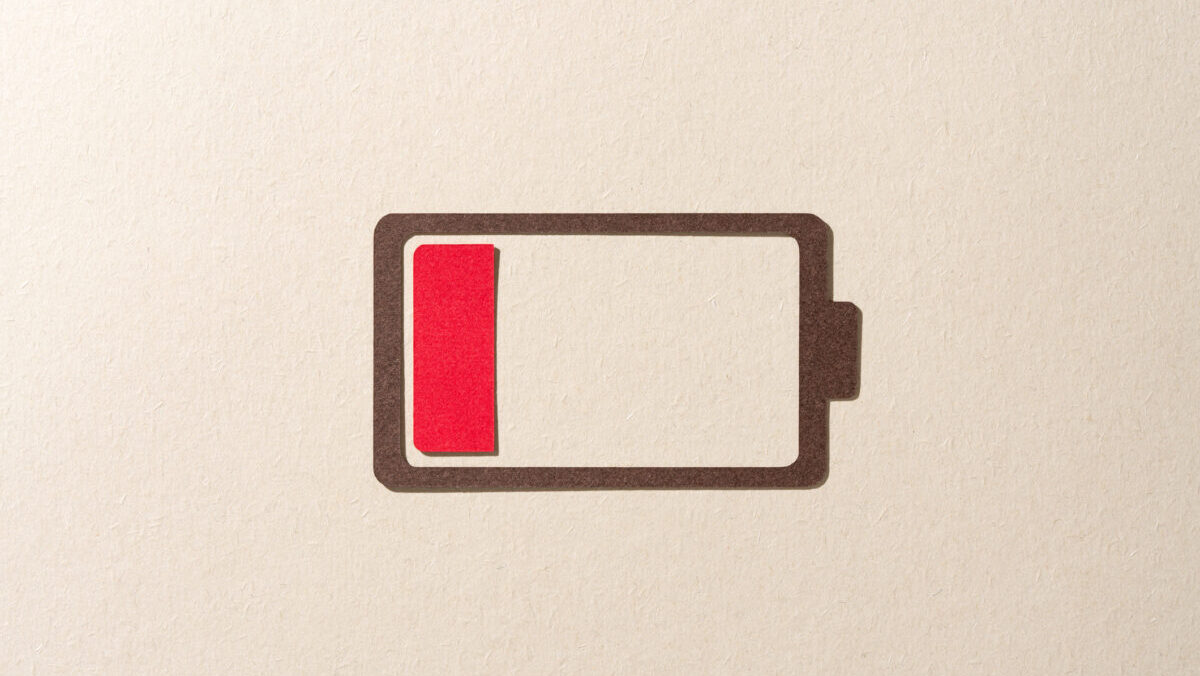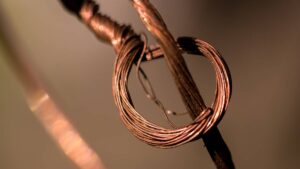Ground Breakers: Battery metal blues continue as BHP feels nickel pain, Albemarle cuts lithium costs

Pic: MirageC/Moment via Getty Images
- BHP flags impairment, cost cutting at Nickel West operations as battery metals price fall bites
- Comes after Albemarle curtailed US$750m in spending in response to tumbling lithium prices
- BHP’s iron ore and copper output remains solid, but its met coal guidance copped a whack on output and costs
The impacts of savage downturn in nickel and lithium prices has come into full view with BHP (ASX:BHP) flagging cost cutting measures and impairments at its Nickel West business in WA and lithium giant Albemarle announcing a range of project halts expected to save US$750 million.
That will include a scaleback of plans at the multi-billion dollar Kemerton lithium hydroxide plant in WA, where activities will now focus on commissioning the existing first two trains and construction of a third, which is already under way.
It appears a fourth train at the 100,000tpa refinery, pegged to be the largest outside China once complete, has been tossed aside.
Albemarle has also sold off its remaining 4% stake in the object of a failed $6.6b takeover last year, Liontown Resources (ASX:LTR), raising in the order of $120m.
Albemarle will rein in spending “including a reduction in headcount”, part of administrative savings of US$95m a year, with capex this year to fall from US$2.1b to US$1.6-1.8b.
Lithium chemical prices have cratered from over US$80,000/t in late 2022 to under US$15,000/t today, while 6% Li2O spodumene concentrate, the product sold by WA miners, was last paying US$875/t on the spot market according to Fastmarkets.
Meanwhile, BHP revealed in its quarterly review today nickel prices paid to its WA nickel sulphide business fell 24% YoY from US$24,362/t to US$18,602/t in the December half, with LME nickel prices even lower today at a touch over US$16,000/t.
The division, which has long been marginal and saw EBITDA fall from US$420m to US$154m in FY2023, is suffering from a ‘cyclical low’, which has already knocked out production from higher cost operations like First Quantum’s Ravensthorpe and Panoramic’s (ASX:PAN) Savannah. BHP lifted production 4% in the first half to 40,000t but has flagged plans to ‘mitigate the impact’ of lower nickel prices.’
“The nickel industry is undergoing a number of structural changes and is at a cyclical low in realised pricing. Nickel West is not immune to these challenges,” BHP said.
“Operations are being actively optimised, and options are being evaluated to mitigate the impacts of the sharp
fall in nickel prices.
“Given the market conditions, a carrying value assessment of the Group’s nickel assets is ongoing, and a further update will be provided with the release of the financial results on 20 February 2024.”
Iron ore guidance still on track
Meanwhile, BHP says its guidance remains on track in the flagship WA Iron Ore division, where it is likely to see an uptick in earnings thanks to an average realised price that climbed 21% in the December half to US$103.7/wmt.
Output fell 3% at WAIO to 126Mt (142Mt on a 100% basis), with BHP expecting its 80Mtpa South Flank mine to hit its full run rate by the end of FY24, and a port debottlenecking project at Port Hedland to be done by the the end of this calendar year as it looks to hit guidance of between 250-260Mt (100%: 282-294Mt.)
The high grade Samarco operation in Brazil, a JV with Vale notable for a tailings dam disaster that killed 19 people in 2015, saw a 13% lift in output to 2.5Mt (5.1Mt 100%), with BHP keeping its 4-4.5Mt guidance unchanged.
BHP, which is still facing legal challenges over the disaster, said it approved up to US$925m of additional financial support in December for the Renova Foundation, a body tasked with remediating the impacts of the collapse.
In WA, BHP’s iron ore production was up 4% quarter on quarter to 72.7Mt.
The integration of OZ Minerals’ South Australian copper assets has meanwhile seen BHP lift copper output 7% to 894,400t in the first half of FY24 despite a 4% drop in the December quarter to 437,400t which included a 7% slide in output at Escondida to 254,600t and 24% fall at Pampa Norte to 59,800t.
It has kept guidance for its copper business at 1.72-1.91Mt, with its South Australian copper output up 48% in the half to 153,700t with the inclusion of the Prominent Hill and Carrapateena mines alongside the Olympic Dam mine and smelter.
But BHP has seen challenges in its coal assets.
While NSW Energy Coal — the Mt Arthur thermal coal mine in NSW — had its best producing half in five years, up 36% to 7.5Mt, prices were down 65% to US$123.29/t.
At its BMA met coal operations in Queensland meanwhile, output fell 17% to 11.3Mt on a 50% basis (22.6Mt 100%) in the half.
Despite a 2% lift to 5.7Mt (100%:11.4Mt) in the December quarter, it was down 18% YoY in the three months to December 31, with BHP upping its cost guidance from US$95-105/t to US$110-116/t.
The production guidance on a 100% basis at BMA has also been cut from 56-62Mt to 46-50Mt, with the Daunia and Blackwater sales to Whitehaven Coal expected to complete around April 2.
BHP still pulled in strong prices for its coking coal, down 1% YoY in the half to US$266.43/t.
But maintenance, a longwall move and geotechnical faulting at the Broadmeadow mine until early November as well as an increase in stripping hurt production.
After the quarter on January 15, a contractor from BEP Engineering and Maintenance at the Saraji mine was killed in a vehicle incident, with operations suspended and expected to restart progressively in the coming days.
“Tragically, a team member from BEP Engineering & Maintenance, a contracting partner to BMA, was fatally injured in an incident at BMA’s Saraji mine earlier this week. Our deepest sympathies are with their family, friends and colleagues at this difficult time. We are committed to learning from this tragedy and investigations into the incident are underway,” BHP CEO Mike Henry said.
Results a negative: RBC
RBC’s Tyler Broda and Kaan Peker said while BHP’s numbers at BMA were in line with its forecasts, they came in 13% below consensus, with the nickel write down also a concern.
“The low nickel prices have been flagged as potentially driving a write down. In FY23 Nickel West carried $1.1bn of average capital (but whatever portion is written down will be non-cash),” they said.
“There will also likely be consensus downgrades of forward nickel volumes, depending on the scale of remedial action that BHP takes, but these, at least in our current modelling, are by and large driving negative EBITDA so shouldn’t have a material impact beyond accelerated closure and care and maintenance costs.”
They also noted BHP’s net debt guidance of US$12.5-13b was above RBC’s US$11.7b estimate and consensus expectations of US$11.4b.
“The net debt was guided to $12.5bn to $13.0bn and appears to be mainly influenced by the $1.5-$1.7bn working capital outflow (RBC $350m, cons $880m), which is part higher receivables, but mainly appears to be the current portion of rehab and closure liabilities, suggesting this will largely be a full cash outflow in due course. This means a c. negative $1.2bn-$1.6bn delta to consensus net debt all-in for HY24,” they said.
But they said it remains a favoured large cap exposure for the bank, with the flagship WAIO business “continuing to perform” and BHP’s shares already pulling back 8% YTD in Australia.
BHP shares fell 1.4% in early trade, punting the ASX materials sector to a 1.01% loss, while Liontown was a big loser in the mid-tier, down 11.4% after Albemarle’s share sale.
After Gina Rinehart’s intervention nixed the Liontown takeover last year, the ~$3b stock has tumbled from the $3 bid price to just $1.18.
Ground Breakers share prices today

UNLOCK INSIGHTS
Discover the untold stories of emerging ASX stocks.
Daily news and expert analysis, it's free to subscribe.
By proceeding, you confirm you understand that we handle personal information in accordance with our Privacy Policy.








